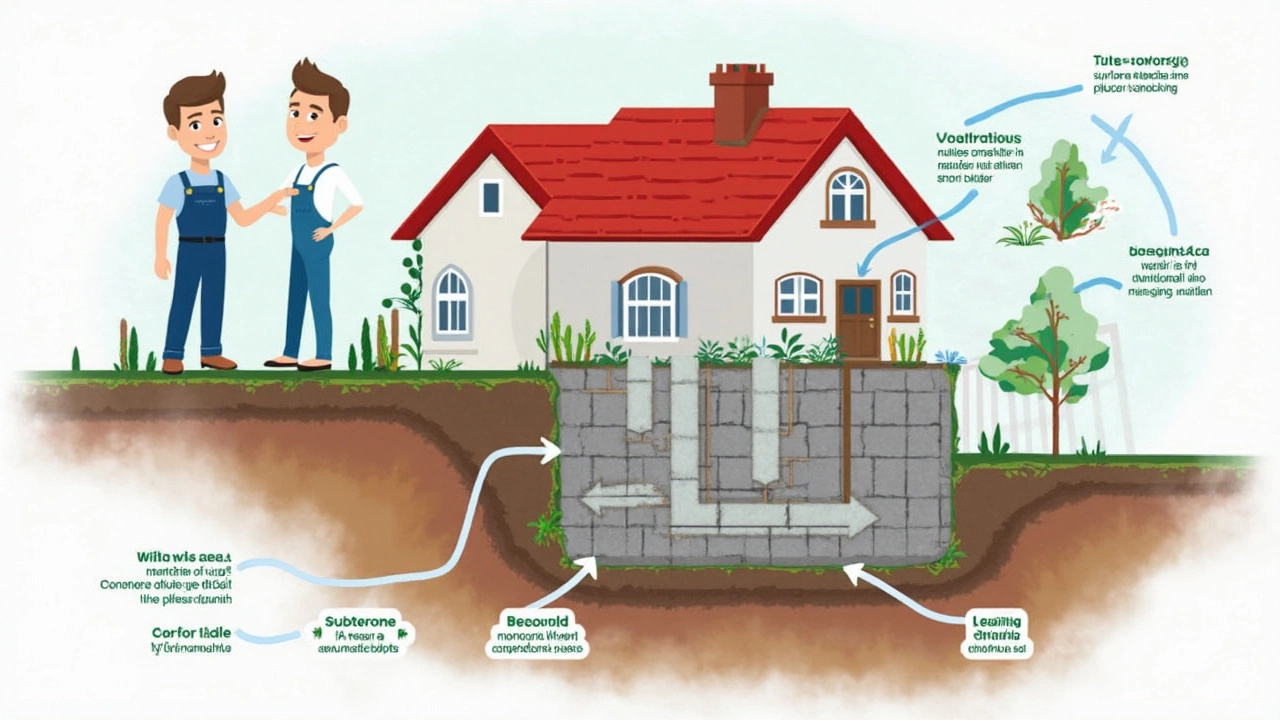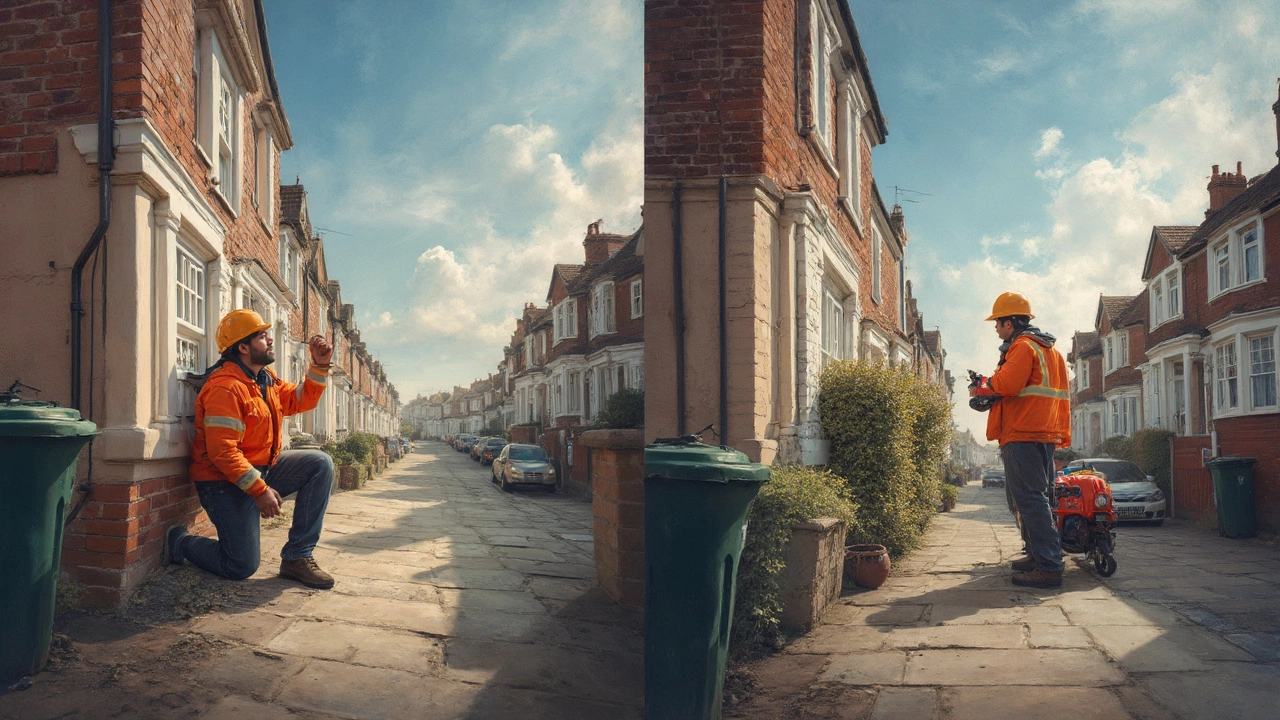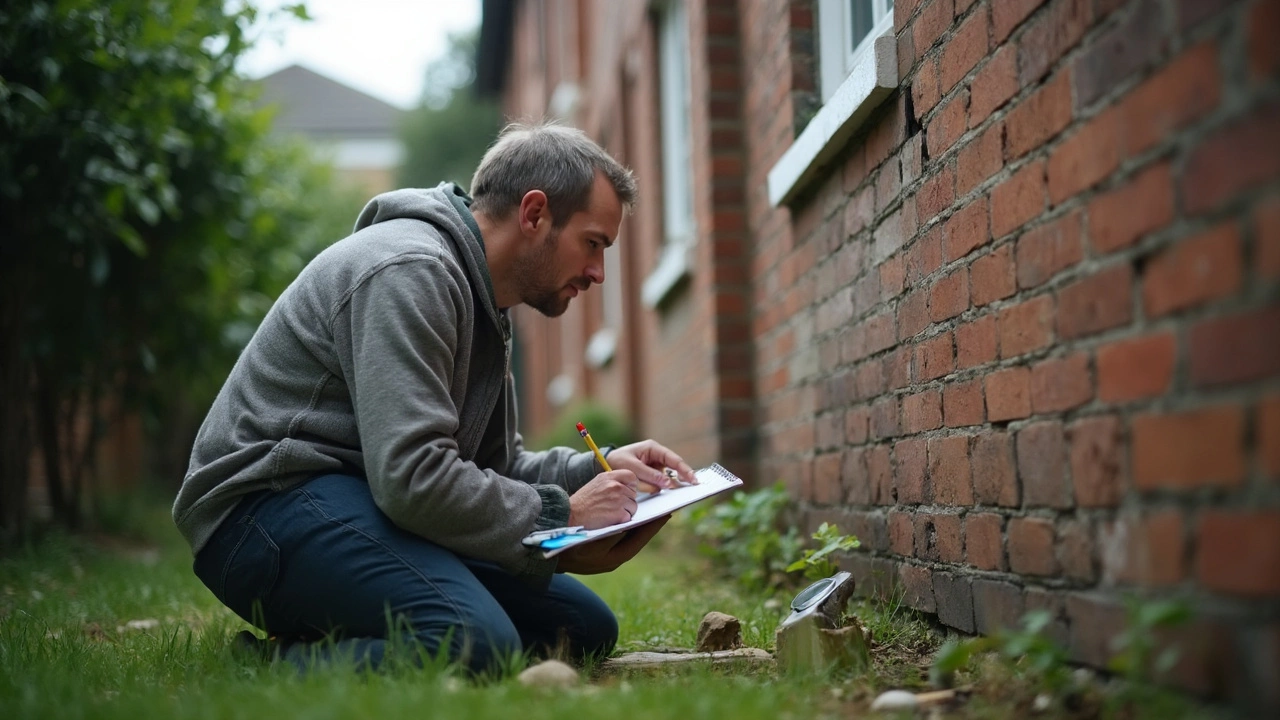If your doors start sticking or you notice weird cracks crawling up your walls, your foundation might be trying to tell you something. It’s a total myth that only old houses get foundation issues—brand new homes can shift too, especially in places with heavy rainfall or wild temperature swings.
The nightmare scenario is doing nothing and waking up to busted pipes or a sloped floor. The sooner you spot problems, the cheaper and easier it is to fix them. Watch out for uneven floors, gaps around window frames, or cracks wider than a pencil. If you see these, don’t just paint over them. Figure out what’s really going on underneath.
- Why Do Foundations Go Bad Anyway?
- Spotting the Warning Signs Early
- Easy Fixes You Can Actually Do
- When It’s Time to Bring in the Pros
- Popular Foundation Repair Methods Explained
- How to Keep Foundation Problems from Coming Back
Why Do Foundations Go Bad Anyway?
Most foundation problems start with the dirt under your house. Not all soil is created equal—clay swells up when it gets wet and shrinks when it dries, while sandy soil barely moves. If the dirt under your home keeps shifting, the foundation above it doesn’t stand a chance. That’s why homes in Texas, Oklahoma, and other places with clay-heavy ground see more trouble after heavy rain or a long dry stretch.
Leaks are another big culprit. Plumbing leaks under the slab slowly wash away soil, leaving empty pockets. That’s how you get sinking or cracked concrete. Poor drainage around the house is just as bad—it dumps water right next to your foundation, ramping up the pressure until the slab cracks or tilts.
Trees can really mess things up. Their roots suck moisture from the ground, leaving the soil dry and prone to shifting. Ever seen foundation cracks pop up near big trees? That’s probably why. Construction shortcuts also haunt some houses—like skipping proper compaction or using cheap fill dirt. These mistakes show up as uneven settling, sometimes a few months or even years after building.
- Soil movement from weather changes
- Plumbing leaks or water buildup
- Poor drainage around house
- Tree roots pulling out soil moisture
- Bad construction practices
Check out how much soil type matters depending on where you live:
| Region | Common Soil Type | Risk of Foundation Problems |
|---|---|---|
| North Texas | Clay | High |
| Florida | Sand | Low |
| Pacific Northwest | Silt/Loam | Medium |
| Arizona | Caliche (hard soil) | Medium |
The foundation repair industry says about 60% of U.S. homes get built on problem soils. Knowing what’s under your house is half the battle. If you spot early warning signs, you can do something before it turns into a major headache.
Spotting the Warning Signs Early
You don’t need to crawl under your house every week to catch foundation problems early. All it takes is knowing what to look for around your home. The most obvious thing people notice first? Cracks—in the walls, ceilings, or right at the base of the foundation slab. Not all cracks spell disaster, but keep an eye out for ones that are wider than a quarter inch, run at an angle, or suddenly get longer.
Doors and windows not opening or closing like they should is another classic sign things are shifting beneath you. If you find yourself slamming a door shut or fighting with a sticking window, foundation movement could be behind it.
Uneven or sloped floors are an underrated clue. If you drop a marble and it rolls away or you feel the floor isn’t level, it’s not just annoying—it’s often related to foundation settlement. Don’t ignore the floors in basements or crawl spaces either; if they feel spongy or have gaps between the flooring and walls, it’s time to investigate.
- Sticking doors or windows
- Cracks wider than a quarter inch (especially diagonal ones)
- Gaps between walls and the ceiling or floor
- Sagging or bouncy floors
- Water pooling near the foundation
- Trim or molding pulling away from walls
If you’re seeing a few of these warning signs, snap some photos and date them. This makes it easier to tell if things are changing. Sometimes, these symptoms could mean water drainage issues or shifting soil, but they always deserve a closer look. Staying on top of foundation repair warning signs saves you money and a lot of trouble down the road.

Easy Fixes You Can Actually Do
Don’t panic if your house has a few minor cracks or a door that sticks after a rainy week. Not every issue demands a pro right away. In fact, some simple fixes can keep small problems from blowing up into expensive foundation repair headaches.
- Seal Up Cracks Right Away: For tiny cracks (think anything less than a quarter inch wide), grab a tube of flexible concrete or masonry caulk from the hardware store. Clean out loose debris and squirt the caulk in. This keeps water and bugs out and prevents the crack from growing.
- Control Water Runoff: Gutters and downspouts make a huge difference. Make sure they’re pointing water at least 5 feet away from your foundation. A plastic downspout extension costs less than a pizza and can save you thousands.
- Check for Soil Sloping Toward the House: If water pools next to your walls, get a shovel and gently slope the soil away. Even a slope of 6 inches over 10 feet helps keep water from seeping under your foundation. You don’t need to regrade your whole yard—just work on the problem spots.
- Keep the Soil Moist (Yes, Really!): In dry spots, run a soaker hose about 18 inches from the foundation for 20 minutes once or twice a week. Sudden droughts can shrink clay soils, causing the house to settle unevenly.
If you want some real numbers, check out what the National Association of Home Builders found when homeowners tackled small issues early vs. ignored them:
| Action | Average Repair Cost Later |
|---|---|
| Fixed foundation cracks early | $400 - $1,000 |
| Waited until cracks grew | $4,000 - $12,000 |
Notice weird gaps under cabinets or baseboards start showing up? Shove a wood shim or add some weatherproofing foam, but if it keeps getting worse, don’t cross your fingers—move on to professional help before something big goes wrong. These easy fixes might seem simple, but they’re the difference between a weekend project and a serious structural nightmare.
When It’s Time to Bring in the Pros
There’s a point where DIY fixes won’t cut it, and you’ll need to call in a pro for foundation repair. If you spot diagonal cracks wider than a quarter inch, floors that slope enough to send a rolling pen across the room, or doors and windows that won’t close at all, it’s time for expert help. These signs usually mean the problem is bigger than cosmetic and could get expensive if you wait.
One eye-opening stat: the average cost of professional foundation repair runs anywhere from $4,000 to $14,000 depending on whether you need small patching or have to lift and support parts of the house. The longer you wait, the more expensive it gets. Look at the table below for a ballpark idea of what the pros might charge for different jobs:
| Repair Type | Average Cost (USD) |
|---|---|
| Minor Crack Repair | $500 - $2,000 |
| Foundation Jacking (Slabjacking/Mudjacking) | $3,000 - $6,000 |
| Pier Installation | $7,000 - $20,000 |
| Major Structural Repairs | $10,000 - $30,000+ |
If your house sits on clay soil or was built in a flood-prone area, you’re at higher risk for major problems. Pros have special tools like laser levels and soil moisture meters to figure out exactly what’s happening beneath your floor, so it’s not just guesswork. They can tell you if you need piers, wall anchors, or a full-on drainage overhaul.
- If cracks keep getting bigger month after month
- You notice sudden dips, humps, or bouncy spots in your floor
- You see water pooling around the outside of your house after it rains
- Your chimney or porch is pulling away from the rest of the structure
— you’re not going to fix this with caulk and a level from the hardware store. A pro can save you from wasted time and even bigger bills down the road. The best step? Get a few quotes, check online reviews, and always make sure your contractor is licensed and insured. It pays to be picky here, since the foundation is literally holding up your investment.

How to Keep Foundation Problems from Coming Back
So your foundation's been fixed, but nobody wants to see cracks making a comeback. The truth is, keeping issues away is all about maintenance and keeping moisture under control. About 60% of American homes are built on clay soil, which seriously swells when wet and shrinks when dry. That makes homes especially at risk if water management isn’t on point.
Here’s what you can do to stop problems in their tracks:
- Foundation repair doesn’t end with the bill. Make sure your yard slopes away from your house, so rainwater runs off instead of pooling at the base. A slope of at least six inches for every ten feet is recommended.
- Clean your gutters at least twice a year. Clogged gutters send water right where you don’t want it—next to your foundation.
- Fix broken downspouts so they dump water at least five feet from your walls.
- Keep big trees and shrubs at least 10-15 feet from your house. Their roots soak up tons of water and can make the soil shift like crazy.
- If you live in a super dry area, water the soil around your home during hot months. Sounds backward, but even moisture is way better than wild swings that cause soil to crack and shrink.
- Check crawl spaces or basements for dampness and fix leaks fast. Moldy smells or puddles mean you’ve probably got a drainage issue.
Keeping records helps, too. Take photos of any cracks or weird settling every few months. If something gets worse, you’ll spot it way before real damage happens.
Here’s a quick cheat sheet for regular upkeep that actually pays off in preventing foundation repair headaches:
| Task | How Often | Why Bother? |
|---|---|---|
| Clean gutters | Twice a year | Stops water pooling at foundation |
| Check grading | Every spring | Ensures rain flows away from house |
| Inspect for cracks | Every 3-4 months | Catches issues early |
| Look for damp spots | After heavy rain | Finds leaks before they spread |
| Cut back roots | Yearly | Keeps soil stable around home |
Staying proactive makes all the difference. Fix tiny problems fast, and you’ll keep the big, expensive ones far away.





